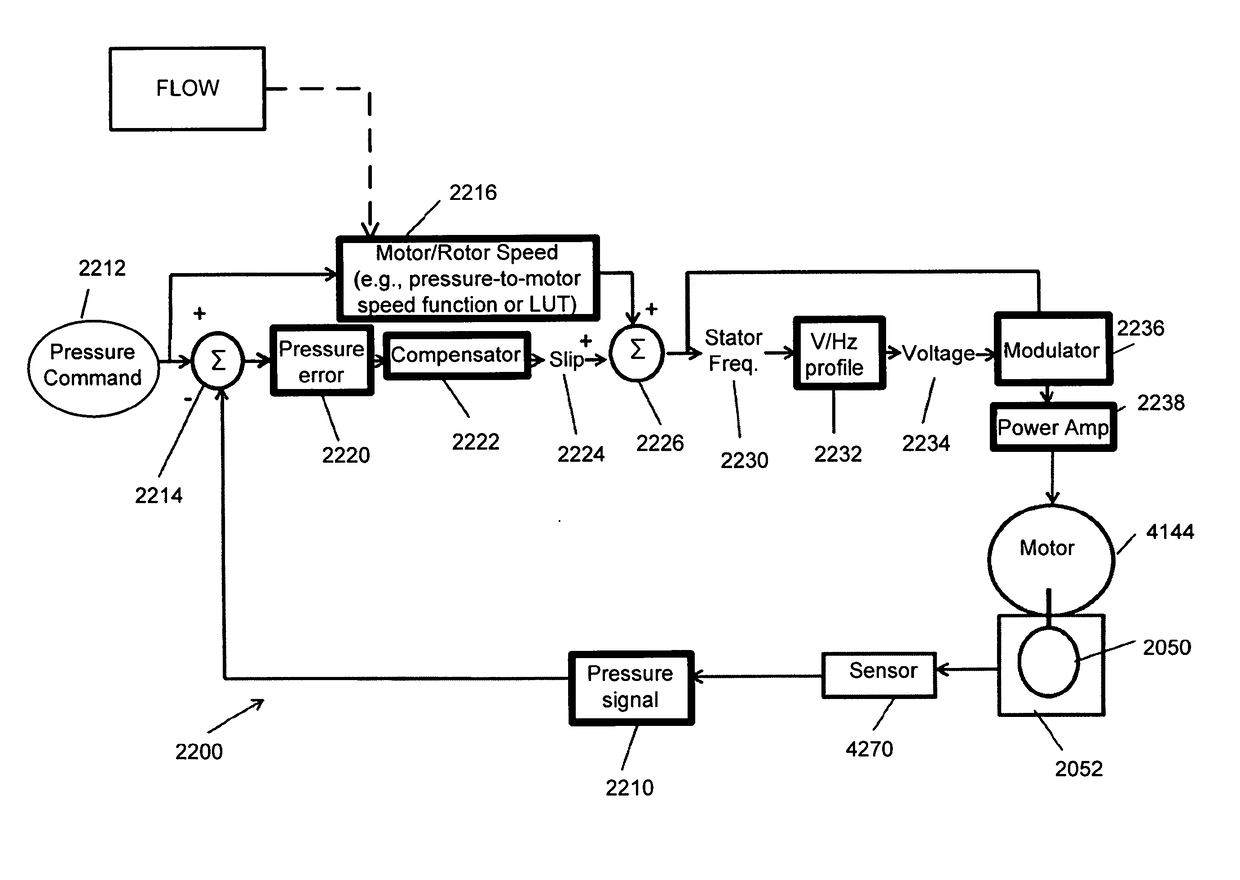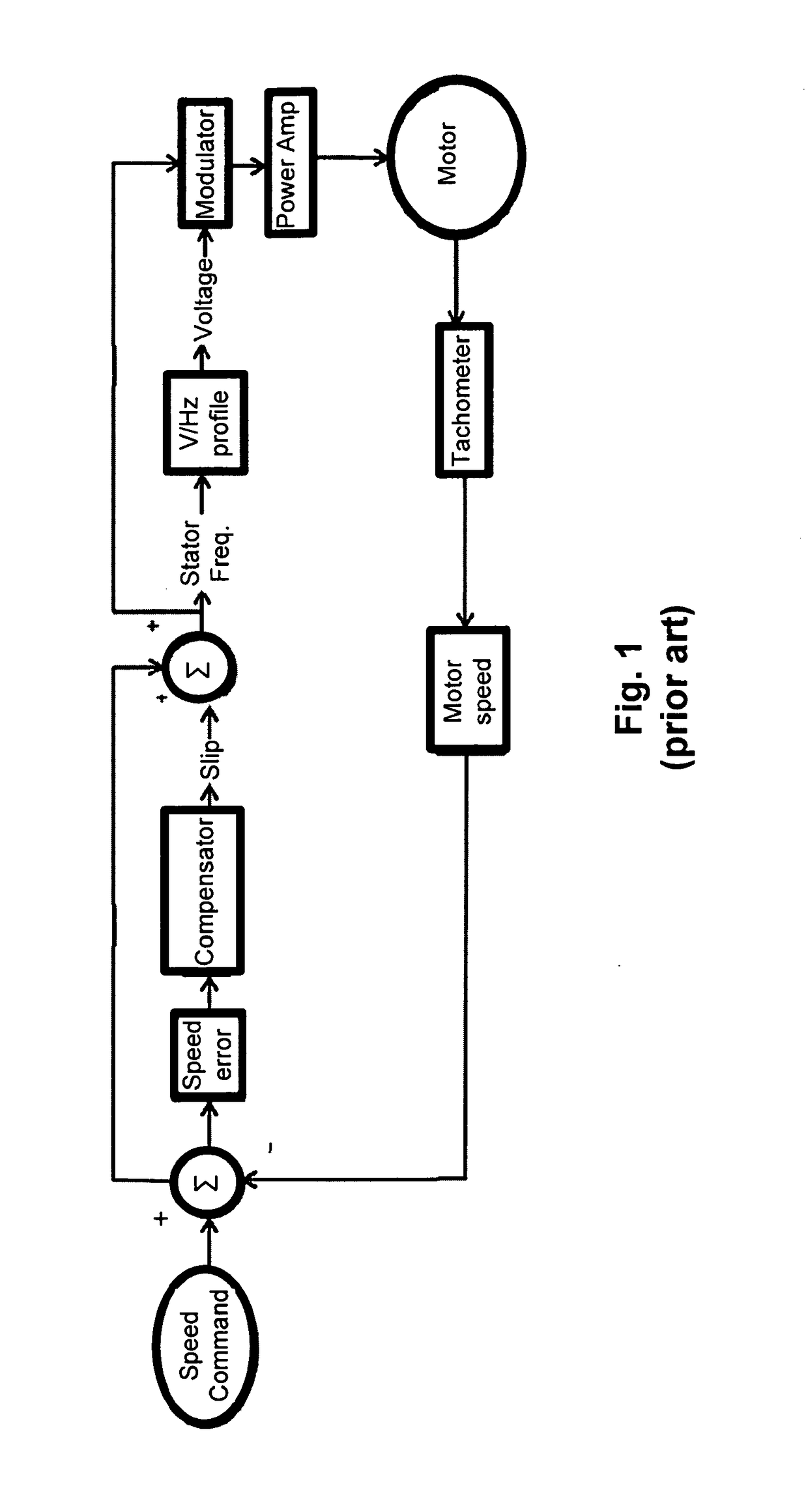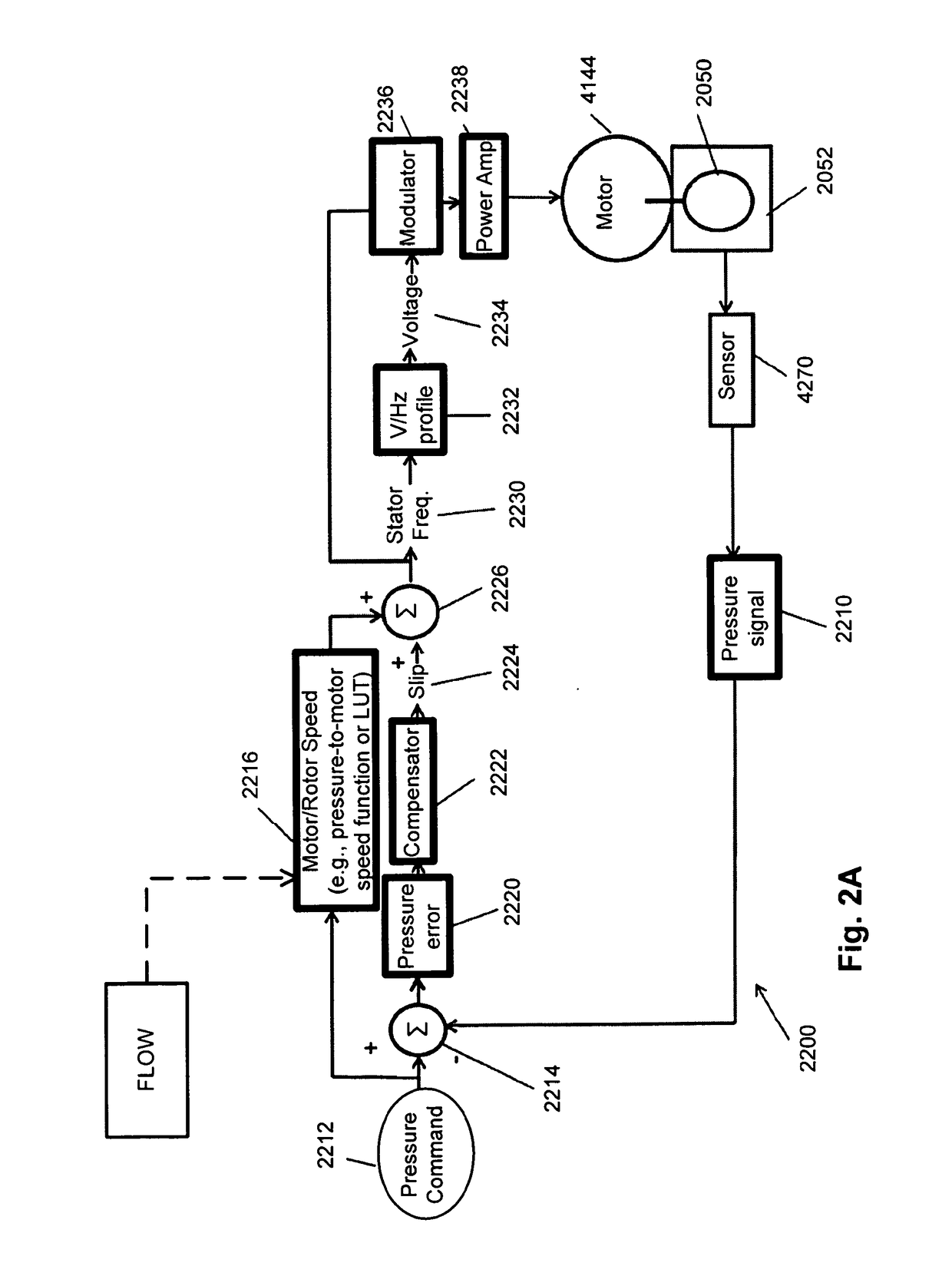Induction motor control
a technology of electric commutation and motor, which is applied in the direction of machines/engines, respirators, liquid fuel engines, etc., can solve the problems of reducing the output torque of the motor, reducing the availability of rare earth metals, and high motor cost, so as to reduce the pressure error
- Summary
- Abstract
- Description
- Claims
- Application Information
AI Technical Summary
Benefits of technology
Problems solved by technology
Method used
Image
Examples
example 1
[0231]A control system for an induction motor configured to adjust a slip frequency of the induction motor based on a measured characteristic of a flow of fluid produced by a rotating rotor of the induction motor.
example 2
[0232]The control system of EXAMPLE 1, wherein an impeller is attached to the rotating rotor and configured to rotate with the rotor to produce the flow of fluid.
example 3
[0233]The control system of any one of EXAMPLEs 1-2, wherein a rotor speed is predetermined based on a set level of the characteristic of the flow of fluid to be produced by the rotating rotor.
PUM
 Login to View More
Login to View More Abstract
Description
Claims
Application Information
 Login to View More
Login to View More - R&D
- Intellectual Property
- Life Sciences
- Materials
- Tech Scout
- Unparalleled Data Quality
- Higher Quality Content
- 60% Fewer Hallucinations
Browse by: Latest US Patents, China's latest patents, Technical Efficacy Thesaurus, Application Domain, Technology Topic, Popular Technical Reports.
© 2025 PatSnap. All rights reserved.Legal|Privacy policy|Modern Slavery Act Transparency Statement|Sitemap|About US| Contact US: help@patsnap.com



